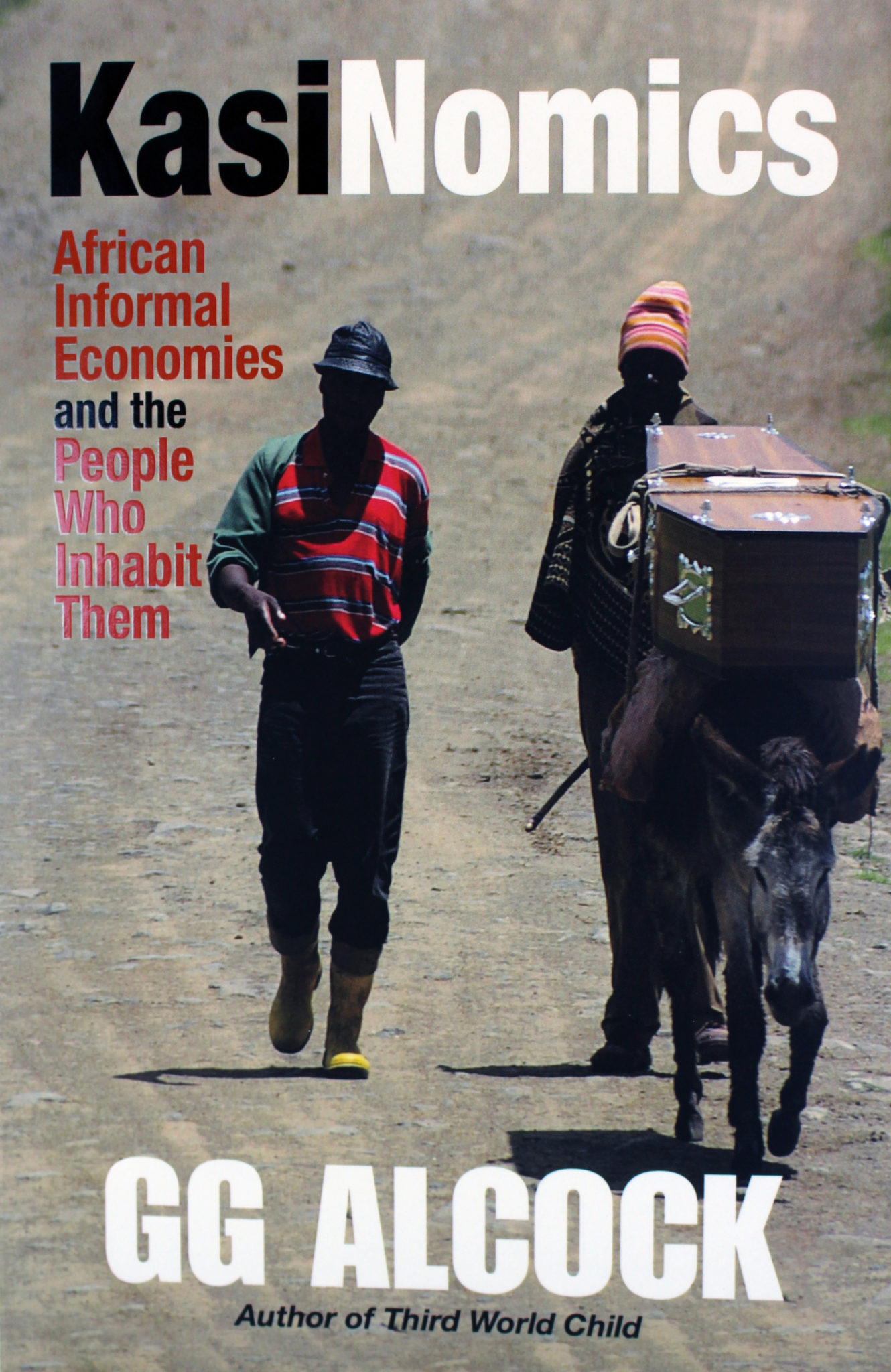
Kasinomics: African Informal Economies and the People Who Inhabit Them. By GG Alcock, Tracey MacDonald Publishers, 178 pages
The traditional medicine market in South Africa is worth R2.9 billion a year, and serves 27-million consumers and employs 133,000 people. Yet, there is no renewable supply chain in place to meet the demand for herbal ingredients. Why are companies quick to build farms and logistics to send frozen cranberries to Europe, but not so quick to supply bulbs for traditional muti in the local market?
Kasinomics shines a light on the hidden dynamics of South Africa’s informal economy and deeply interrogates some of the subtleties of its culture and consumerism. The book’s essence is caught in its conclusion: “The street is a market, the hole-in-the-wall spaza is a retail sector, the goat and the chicken yard is a farm, smoky muti shops are a pharmacy sector, a stokvel is a financial sector, and a shack is a home.”
But Kasinomics is not a glance at a new fashion in economics, or an attempt to capitalise on the Christmas gift-a- book-by-its-cover market. Nor is it a cute theory drawn on the back of office-bound statistics or the promise of a silver bullet that might magically save South Africa from cultural collapse. Kasinomics is a travel memoir through the valleys, hills, temples and tempers of South Africa’s cultural diversity and the implications this diversity has for business and marketers. The journey unfolds in three acts: enlightenment, culture and economics.
Part one encourages the reader to remove their filters of prejudice and see the unseen. GG Alcock, a white man, had a Zulu upbringing near the Tugela River in KwaZulu-Natal. His personal journey took him from herding goats to the migrant labour hostels of Johannesburg, and then to a career as CEO of his own company, Minanawe Marketing. His unique experience transcends social and economic boundaries in South African culture and allows him and his company to unearth marketing secrets that are hidden in plain sight.
Alcock tells the story of a kota outlet owner in Soweto who couldn’t buy a Jeep Grand Cherokee from a dealership because they wouldn’t believe that the R500,000 cash he had with him was earned from selling quarter loaves of bread filled with juicy ingredients. That outlet alone sold 2,400 kotas and made a profit of R12,000, every day.
Minanawe thought about the thousands of kota and vetkoek outlets in the country, and, holding it by the hand, helped a large dairy company to introduce individual cheese slices as a premium addition to a kota or vetkoek order. The value of cheese slices in the sector is now estimated to be worth R400 million a year in sales. This, and many other examples in the book, shows that companies are only poorer if they ignore the poor.
Part two of the book turns to culture and unpacks the class structure and economic idiosyncrasies of a modernising – not westernising – black population. Outdated but overused Living Standard Measures (LSMs) filter people into the poor, middle and upper classes. But is there a difference between the township black middle class and the suburban black middle class?
Stokvels are informal savings plans and, according to conventional economic models, they don’t make sense. Yet some R45 billion is stored in South African stokvels. People who save with such plans want values and a community ethos that banks can’t or won’t provide. This is one of many topics that Kasinomics uses to show that our perception of what is “rational” is shaped by our culture and our needs.
Part three of the book extends this cultural insight into economic outcomes. Is it rational for a poor person to buy individually packed nappies at a premium instead of a larger value-pack? Yes, if it’s the last week of the month, when consumers can only afford one product at a time. Is it rational for a roadside fruit seller to sell their competitor’s fruit for them if they fall ill? Yes, when the gains from community cooperation are greater than those from competition.
A core theme of the book is that where value is perceived, value is demanded. Only our prejudice and ignorance blinds us to think that cattle for car leather represents a business opportunity, while goats for sacrificial ceremonies do not. The book is packed to the brim with business ideas and market gaps, given away freely to the reader.
Yet it is unclear whether the book’s ultimate goal is to improve the lives of those bustling in South Africa’s forgotten industries, or provide insight for maverick marketers. The moral use of cultural insight sometimes gets as blurry as the industry in which Alcock works.
In one example, Alcock explains how Minanawe was tasked with the challenge of separating Jeyes Fluid, a disinfectant, from its competitors in a highly homogenous market. Street-level, human-connected research showed that, for reasons unexplained, Jeyes Fluid was also used to ward off evil from the home. All brands protected the home from germ invasion, only one from spiritual invasion.
Minanawe used that insight to change the advertising message from “cleans and disinfects” to “long-lasting protection for your home”. In physical demonstrations, Jeyes Fluid was sprinkled in the way that sangomas traditionally use potions.
My cultural framework leads me to believe that this is exploitation of superstition for corporate gain. But to stand fast on that conviction is to do an injustice to the very message the book emphasises – that no conclusions about other people can be valid unless they include the perspective of the subject. Using Jeyes Fluid to ward off evil is no different to the belief that milk consumption is necessary for calcium or that a shot of Vitamin C will cure the flu. We all purchase based on our own belief systems.
The market lessons are generally rooted in the power of scale: enough R1 vetkoeks can create a lucrative market for suppliers. But the economic lessons also involve insights about the rest of society. If the dairy company could create a lucrative market for cheese slices by opening its eyes to the scale of informal sales, what impact would it have on the country if society as a whole opened its eyes to the scale of informal opinion? The informal market and its participants are ignored by formal decision makers, yet South Africa’s success and stability depends on them.
The book shares a story of how an elderly lady in the Eastern Cape interpreted a light bulb in a thought bubble to mean that Eskom was installing electricity in nearby houses. Another tells that in a middle-class mall in Soweto, fillet is so unpopular that it is used for mince.
Writing about branding, Alcock states that “language is superficial, one needs to understand a deeper truth, understand what people’s hopes and fears are, what their dreams are”. But this marketing tidbit is connected to the author’s hope that this approach will be taken up by South Africans in all spheres of life. Kasinomics urges us all to have an open and enquiring mind.
Pierre Heistein is a macroeconomic analyst and economic writer specialising in sub-Saharan Africa. He works as an independent specialist for a range of leading consultancies, including 10EQS Consulting Services in the US and Oxford Analytica in the UK. He wrote a weekly column for Business Report, South Africa from 2011 to 2017. He is a co-founder of The 12.01 Project, which produces documentaries on social issues.













